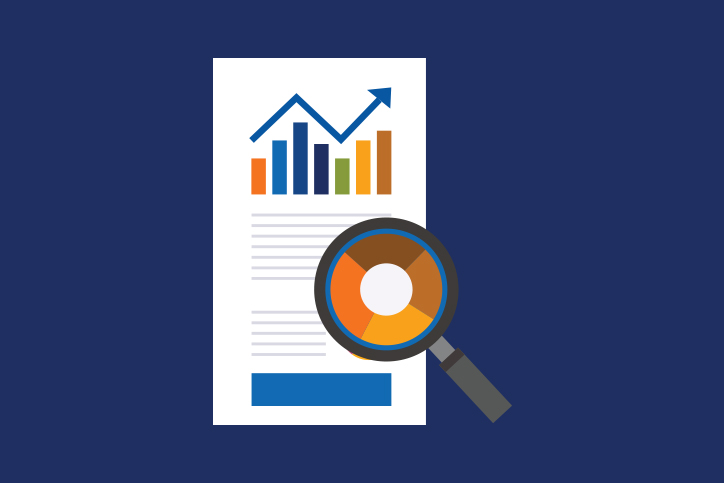Automate Expense Reporting to See Inside Your Data

Do you know what the most expensed business travel brand in North America is? (The answer is below.) Before you peek, see if you can guess. Go ahead, we’ll wait.
The answer: the ride-sharing company, Uber. In fact, since 2016, Uber has consistently been one of the most expensed brand by business travelers.
For employee expenses, trust data, not guesses
Guesses are great when there’s a pop quiz involved. But when it comes to submitting and referencing expense reports, guesses are not the way to go. Instead, we encourage people to use data.
For many companies, actionable expense data is right at their fingertips. But that isn’t the case everywhere.
Guessing on employee expenses can haunt and hurt your business in many ways, both in day-to-day operations, and if you’re ever being audited. One way to gain clarity and simplify the process is to move away from manual expense reporting, and opt for an automated one instead.
Tracking, submitting, and approving expense reports should be efficient for employees, managers, accounting, and payroll. And the reports themselves should provide useful, easy-to-read data. Expense management software such as ExpenseWire can help your business streamline the process.
Automate and streamline your expense report process
Sometimes, the job of completing a report can seem to take more time than it’s worth. And, the more manual the process is, the more likely it will turn into an exercise in guesswork.
- Employees forget to write things down.
- They fudge the math out of forgetfulness.
- Or, they claim a business expense on something that is outside of your expense policy.
The manual process isn’t just tiresome for employees. It can also steal time from managers, accounting, and payroll. Consider the steps involved in a manual expense reporting process:
- Employee pays for a business expense—or at least, what they believe is a business expense.
- Employee logs the expense, often along with other expenses. All too often, they log their expenses well after they actually paid for them.
- Employee turns in their expense report to their manager.
- Manager reviews the report. Instant approval? Not always. They have to check in with the employee about an issue, get some clarity, or ask for a specific receipt.
- The employee cleans up the report, and resubmits it for approval.
- The manager forwards the report to accounting.
Still with us? Good, because we’re 60% of the way through.
- From there, accounting processes and audits the expense, and validates receipts against policies.
- Oops. Turns out, accounting found an issue. The report now goes back to the manager, who gives it back to the employee.
- Steps 1-7 repeat.
- Finally, the expense report makes its way to accounts payable for reimbursement.
The lifecycle of your expense reporting does not need to be this time consuming or frustrating.
Let’s go back to your business travelers for a moment. One of the reasons a company like Uber is the most expensed business travel brand in North America is because they have created a completely digital, and thereby automated process.
- Everything a business traveler needs to do for a ride is at the end of their thumb.
- They tap the app, schedule their ride, and a few minutes later, it arrives.
- No extra steps.
As business travelers lean on digital brands, they expect the same simplicity with the tools they use at work. After all, if they’re already using their phone to schedule an expensed ride, why can’t they rely on the same level of simplicity to actually process the expense?
Now, look again at the expense report steps listed above.
- How many hands and eyes have to land on a single report before it’s processed?
- How much time does this take away from the workday?
- Who’s paying for this time?
An automated system not only speeds this process up dramatically, but it also makes it easier for employees, managers, and accounting to access useful data.
Employee business expenses often land in silos. There are flights, hotels, and rides when employees travel. Plus, there are expenses related to meetings, servicing accounts, and purchasing client gifts. Then, back home, there are work-related functions, office supplies, and plenty more expenses that add up all year around.
In a manual system, it’s extremely time-consuming to track each category.
- What if you needed to track categories six months after the fact, because your company was being audited?
- Would you hire a part-time bookkeeper to take on this project, and pore through mounds of paper, or endless spreadsheet entries?
- How many hours would you dedicate to the hiring, interview, vetting, and onboarding your new hire before you parked them in a corner and let them do their work?
With an automated expense report system, you can breakdown expenses into categories by location, client, industry, time of year, and more. And, you can generate reports that give you the numbers you need to address a tax situation, make a budget presentation, or determine the true ROI on a specific line of business.
Take a lesson from the brands that employees choose when they make a business purchase. If the solution you crave is meant to be simple and streamlined, and provide actionable data, do away with your manual expense report process, and turn to an automated one.
A digital travel and expense management solution can help employees stay accountable to your expense policy, and save valuable time across the company. Contact ExpenseWire to learn more.

